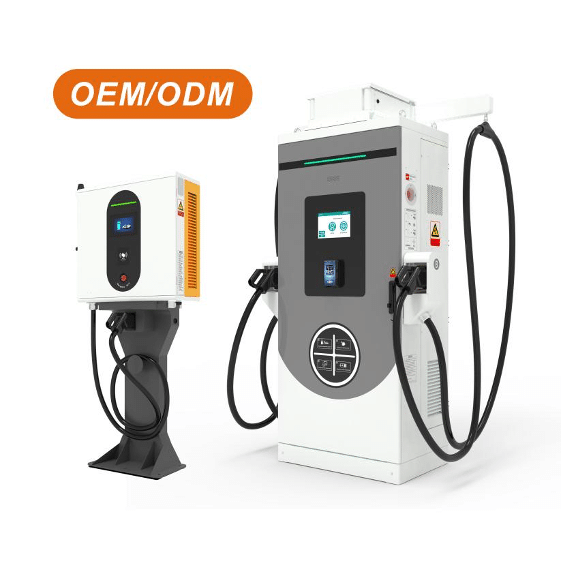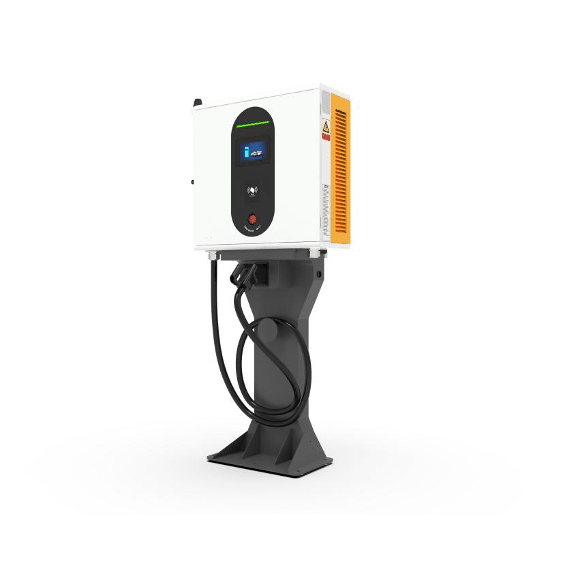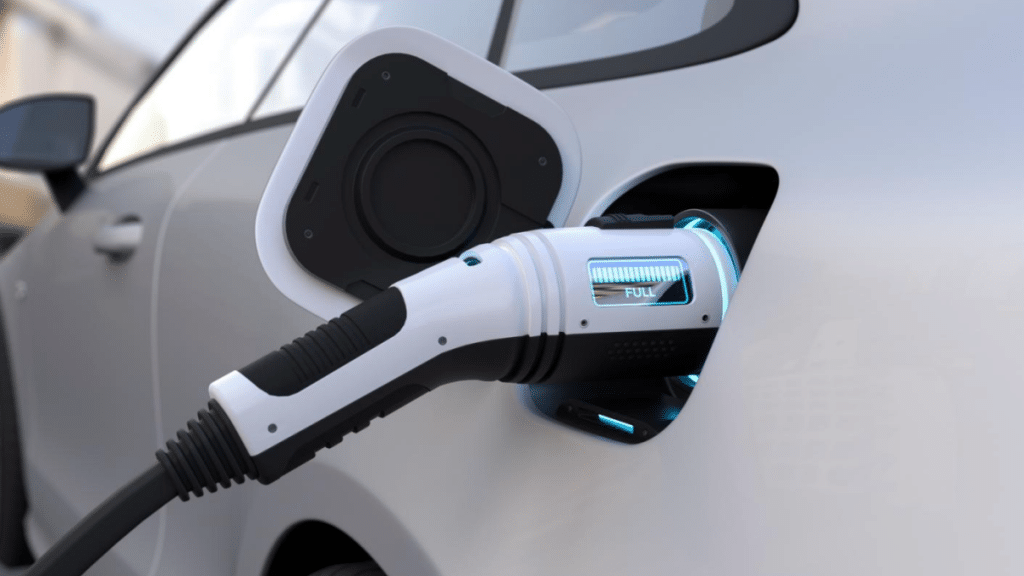Due to growing awareness of eco-consciousness, the demand for electric vehicles has surged globally. To support this green transition, the role of EV charging equipment is phenomenal. They facilitate the widespread adoption of electric mobility by providing reliable power to their batteries.
Then, technical terms come up and require professional explanations. This article will focus on “EVSE”. So, what is EVSE? What does EVSE stand for? What’s inside the EVSE to ensure efficient energy transfer to electric automobiles? Read on to get more insights!
What is EVSE? EVSE Meaning
What does EVSE stand for? It is an acronym for Electric Vehicle Supply Equipment, which is also commonly called charging stations or charging docks. An EVSE encompasses the various components involved in delivering electrical supply from the power grid to the vehicle’s battery.
This charging system includes electrical conductors, cables, connectors, and related software that ensures safe and efficient electricity transfer. EVSE is also meticulously integrated with communication protocols to ensure smooth energy exchange for electric vehicles. Explaining what EVSE stands for clarifies its role in revolutionizing urban mobility and reducing carbon emissions.
Main EVSE Components
After figuring out the question: “What does EVSE stand for?”, let’s move on to the main parts of this electric charging station. From housing to connectors, each component plays a vital role in delivering a seamless charging experience.
1. Housing/Enclosure
The housing or enclosure of an EVSE unit safeguards the internal components from external elements such as weather, dust, and physical impacts. As they are constructed from weather-resistant plastics or metals, these enclosures can withstand various environmental conditions.
Moreover, they are designed in various forms to satisfy diverse charging requirements. For example, standalone boxes are primarily for home charging. Wall- or pedestal-mounted enclosures and towers are more prevalent in public charging environments.
2. Different Electronics
Inside the housing, there are different electronics working together to manage charging sessions and ensure efficient power delivery to battery-driven vehicles. Some of them are:
. Main Relay
The main relay governs the flow of electricity to the electric vehicle. It acts as a switch that can open or close the electrical circuit and safeguard against overcharging or related electric faults.
. Control Module
This electronic component manages the overall operation of the EVSE. It communicates with the electric vehicle to initiate charging, monitors the charging process, and ensures safe power delivery.
. Firmware
Firmware is the software programmed into the EVSE’s control module. It dictates how the EVSE operates and offers a number of other functions. It might include safety checks, charging protocols, and communication with the vehicle and other software on the device.
. Electronic Safety Components
Electronic safety components ensure the protection of both the user and the charging equipment. They include circuit breakers and ground fault circuit interrupters (GFCIs) to interrupt the electrical flow and prevent electric shocks. Moreover, residual current devices turn off the electric supply automatically if they detect any fault.
. LCD Screen/ Touchscreen
An LCD screen or touchscreen provides a user interface for the EVSE. It displays important information such as charging status, energy consumption, and any error messages. This interface can also be used to configure settings and preferences.
3. Cable
The cable is the conduit through which electricity is transmitted from the EVSE to the electric vehicle. It is designed to be durable and flexible to withstand frequent handling and various environmental conditions. Longer cables offer increased convenience, yet there can be length limits to ensure compliance with industry norms for EV charging setups.
4. Connector
The connector is the plug that interfaces with the electric vehicle’s charging port. This EVSE component ensures a secure and reliable connection. Here is an overview of various types of connectors according to their applicable charging levels:
| Types of Charging | Types of Connectors | Charging Speed | Application Scenarios |
| Level 1 Charging | J1772 Connector | Slow | Home charging |
| Level 2 Charging | J1772 Connector, NACS Connector | Faster | Employee/Workplace Charging Public charging, like parks, shopping centers, museums |
| Level 3 Charging/ DC Fast Charging | CCS Connector NACS Connector CHAdeMO Connector | Fastest | Fleet charging Rest stop charging |
Where to Find Leading EVSE Chargers
Now, you may understand what EVSE is and how it facilitates charging. Next, how do you invest in top-rated EVSE chargers to enjoy the benefits? Winline may be a good place for you to explore.
This brand specializes in EV charging, offering EV charging modules, EV chargers, and more. Their mature experience covers fleet charging and business charging. The below two EVSE chargers show their expertise in EV charger manufacturing:

1. Electree Cactus 30-40kW DC Charging Station
The Electree Cactus 30-40kW DC Charging Station offers a faster charging speed than an AC charger. Its main features are:

- Compliance with the European standard of DC charging
- Multiple protection designs to ensure operational safety
- Designed for destination charging scenarios, including hotels, supermarkets, and public charging stations
2. Electree Cypress 120-160kW Super-Fast Charging Station
The Electree Cypress 120-160kW Super-Fast Charging Station is an ultra-fast charging station for more power needs. It offers:

- More powerful data calculation and processing capacity,
- Smarter dispatching strategy
- Better heat dissipation performance
- Lower noise
- Compliance with the requirements of the European and Japanese standard DC interface
- Suitable to charge taxis, shuttle buses, freight vehicles, etc.
Conclusion
In short, exploring the question “What does EVSE stand for?” is the first step toward the adoption of green charging solutions. From enclosures to connectors, EVSE components work together to guarantee reliable energy transfer and user protection.
If you are looking for top-rated EVSE chargers, you may consider Winline. This EV charger manufacturer is well-recognized, with 130+ invention patents and 15+ PCT international patents. Its professional OEM & ODM services can help manufacture EV chargers according to your business needs. Contact them to see the latest EV charging solutions that fit you!
